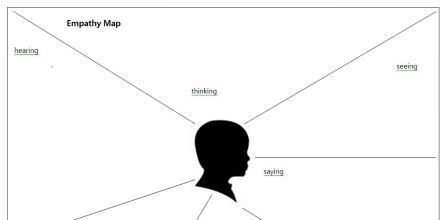What will the world look like when our students leave school? While we educators may not know exactly, we can see the direction the world is taking and can make an educated guess as to what our students will need to be able to do; hence the creation of the 21st Century Skills. When I look at those skills like collaboration, cooperation, communication, problem-solving, and creativity what I see is empathy. Without empathy any one of those skills would be nearly, if not entirely, impossible to attain. And what has a great capacity to help people develop empathy? You guessed it – the arts!
At the heart of successful collaboration, cooperation and communication is the ability of the participants to understand or see the perspective of those with whom they are working. Anne Murphy Paul in “The Brilliant Report” quotes Dr. Keith Oatley, who happens to be a novelist himself, explaining how fiction can help readers develop this ability to empathize.
Fiction, Dr. Oatley notes, “is a particularly useful simulation because negotiating the social world effectively is extremely tricky, requiring us to weigh up myriad interacting instances of cause and effect. Just as computer simulations can help us get to grips with complex problems such as flying a plane or forecasting the weather, so novels, stories and dramas can help us understand the complexities of social life.”
Dr. Oatley found through brain scans that the part of the brain we use to understand narrative stories overlaps with the part of the brain used when exercising “theory-of-mind” or empathy. If merely reading fiction can activate this theory-of-mind, imagine what level of empathy an actor must reach to portray a character! If an issue of bullying arises in the classroom, try designing a dramatization of an analogous situation casting the bully as “victim” and the target as “bully.” By striving to understand one another’s feelings and motivations, students can begin to work out their differences and eliminate the need for bullying. What we human beings deem as problems are the result of us not getting our needs met in some way. Through empathy we can better articulate the problem and be inspired to create a solution.
Often we create to make sense of the world around us. We want to understand why things happen so we write, draw, sculpt, compose, choreograph, or dramatize and in doing so we explore why we humans do what we do. When we as artists explore our inner lives, we then try to communicate our own unique perspective to our audience. Dr. Sylvia Morelli of Stanford
University has found in brain scans conducted in her research that when people feel understood their pleasure centers light up so, subconsciously, we may also create to elicit empathy. When I completed my dance performance for my thesis, a woman unknown to me approached me and simply stated, “Thank you for saying that.” I cannot begin to express how good that felt to be understood and to connect with a perfect stranger in such an intimate way. In my graduate school classes where we students constantly created, shared our processes and supported one another in the creative process, we developed a culture of empathy and cultivated many deep friendships.
Empathy is the foundation of our humanity. It also underlies many of the 21st Century Skills our students will need as they pursue their
education and enter the workforce as thoughtful citizens of the planet. By integrating the arts in our classrooms and allowing our students to be both creators and thoughtful perceivers of art, we help each student develop her/his capacity to empathize and one by one help make this world a better place.
See additional sources at: Using the Arts to Build Empathy, the Ultimate 21st Century Skill

